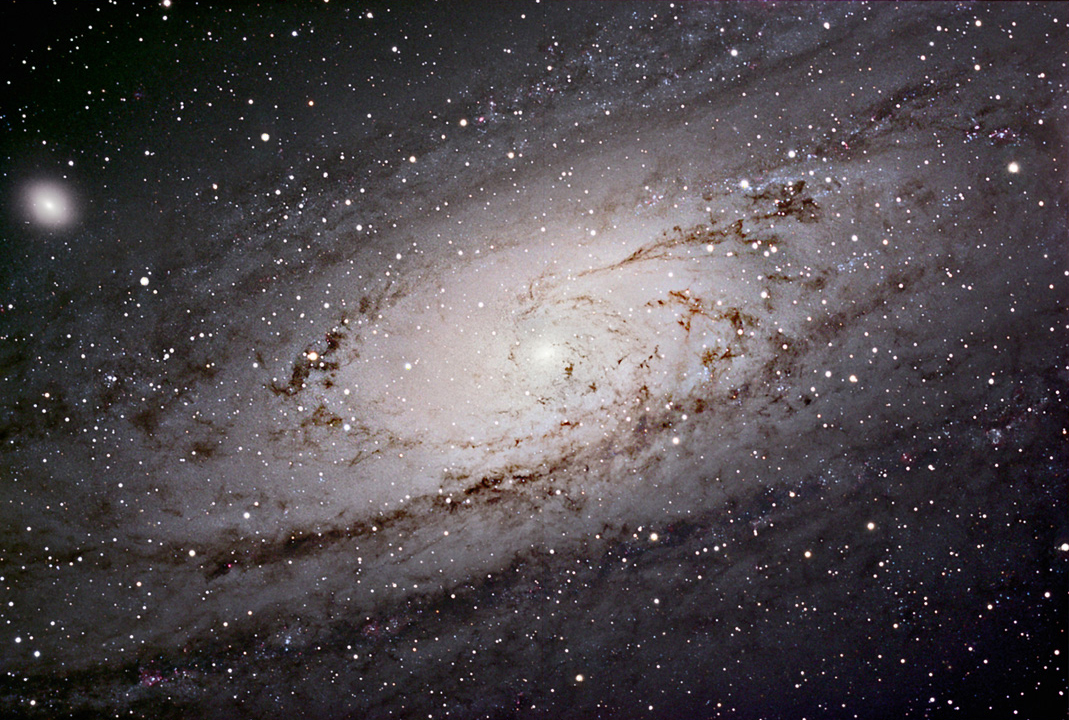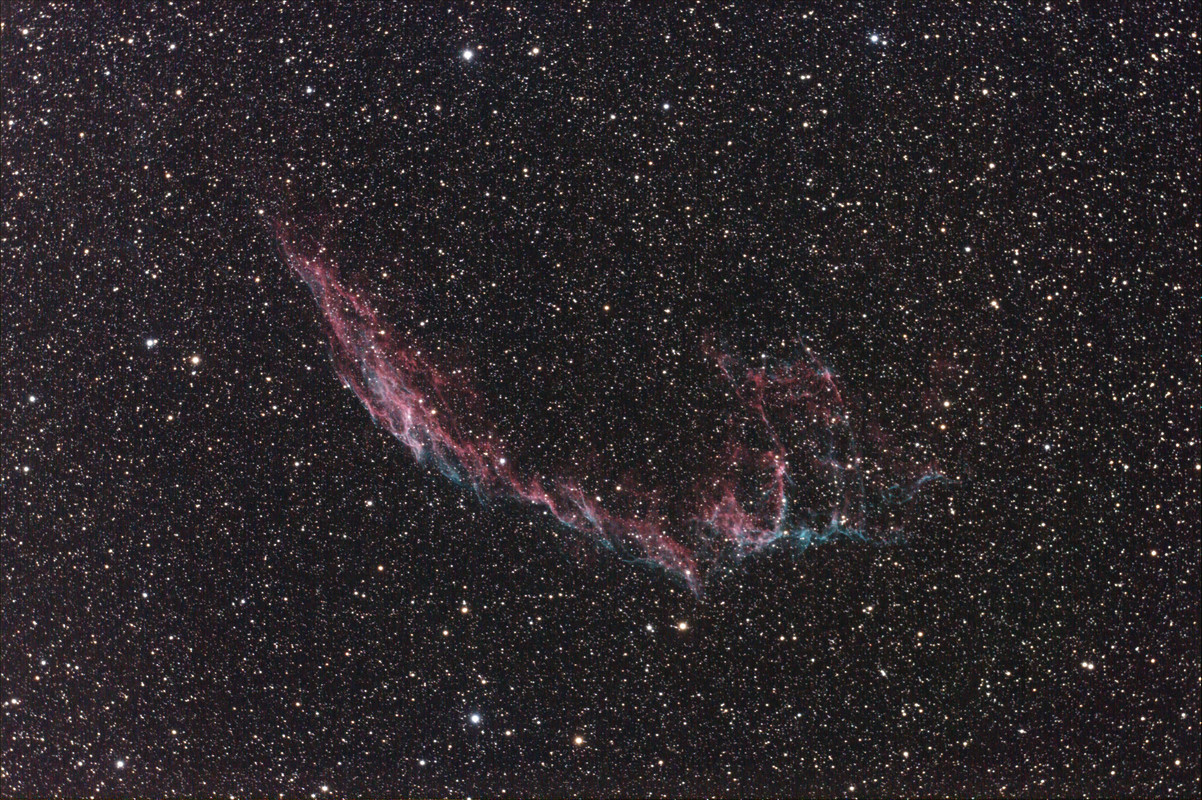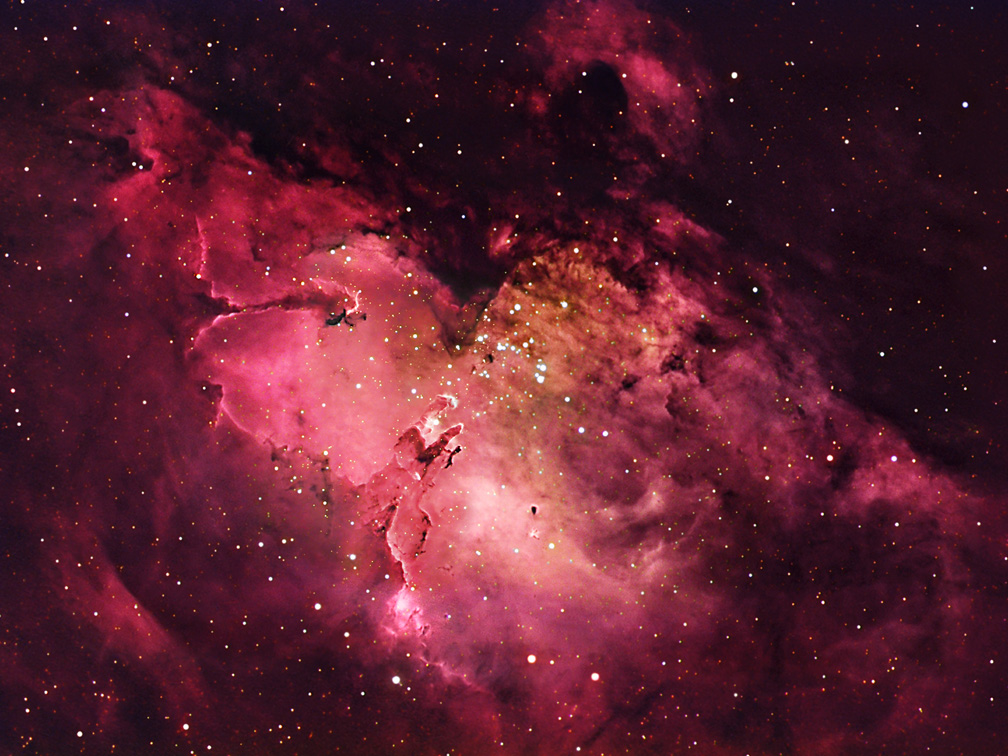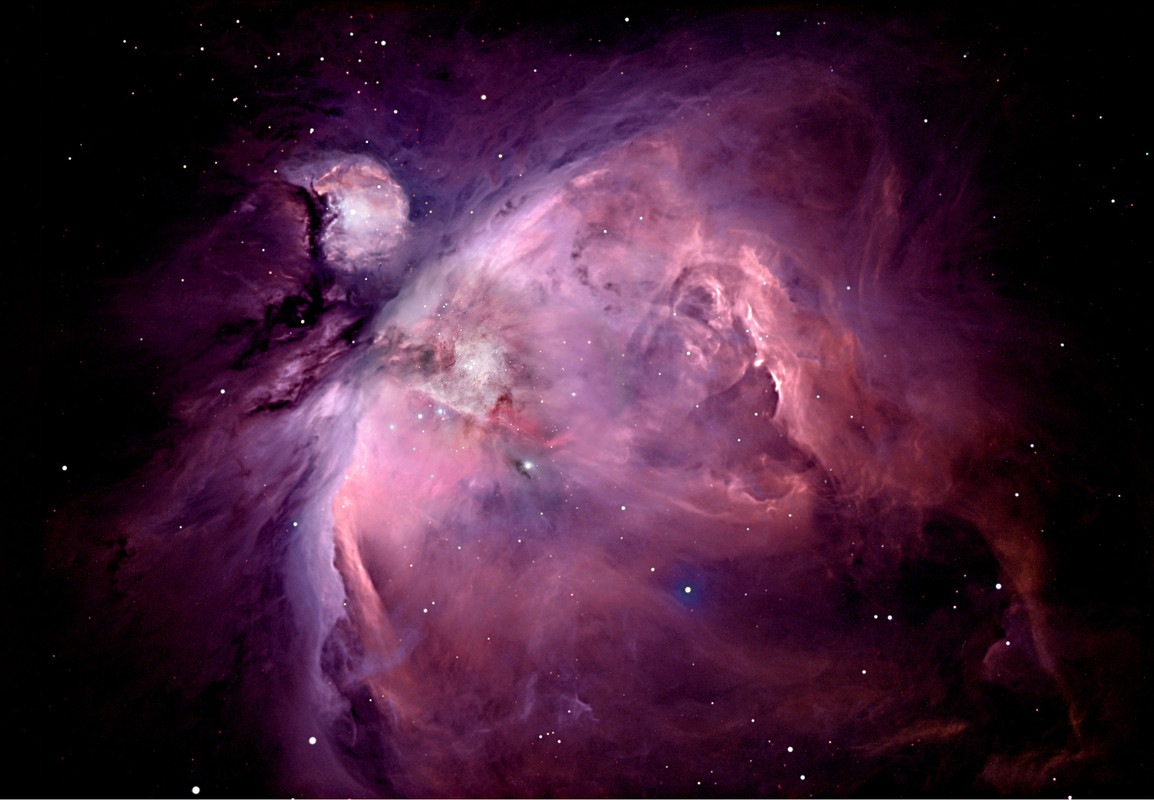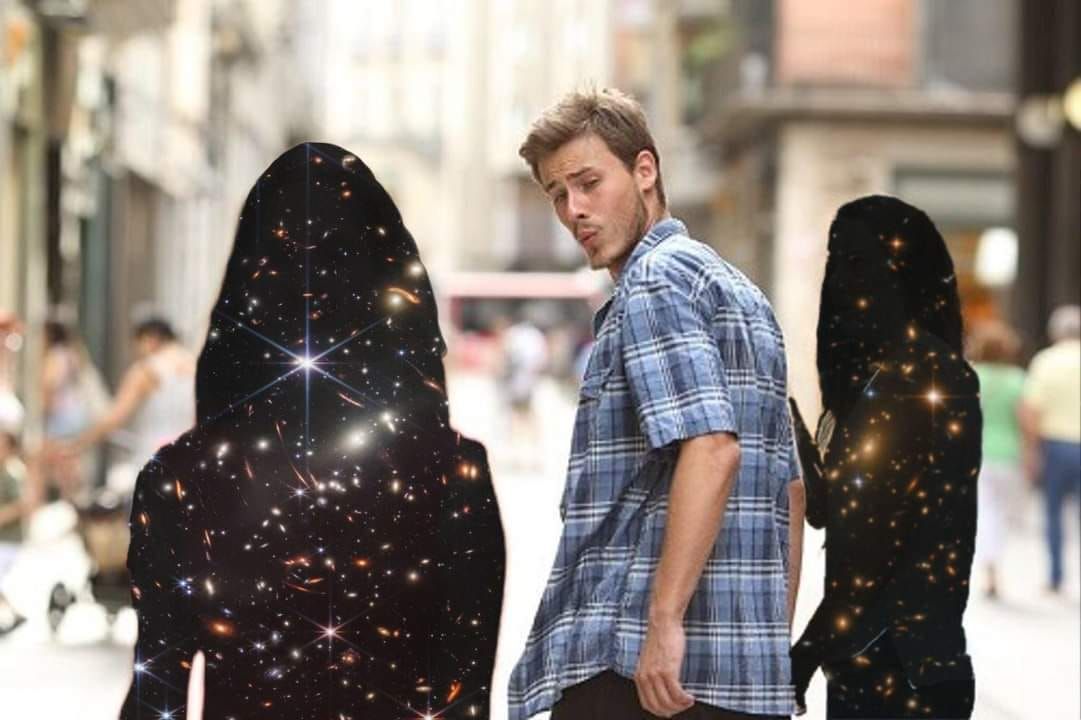James Webb Space Telescope Launch Update
-
Mr. Biden gave us a sneak peak today
https://www.nasa.gov/webbfirstimages
This first image from NASA’s James Webb Space Telescope is the deepest and sharpest infrared image of the distant universe to date. Known as Webb’s First Deep Field, this image of galaxy cluster SMACS 0723 is overflowing with detail. Thousands of galaxies – including the faintest objects ever observed in the infrared – have appeared in Webb’s view for the first time. This slice of the vast universe covers a patch of sky approximately the size of a grain of sand held at arm’s length by someone on the ground.

@Copper said in James Webb Space Telescope Launch Update:
This slice of the vast universe covers a patch of sky approximately the size of a grain of sand held at arm’s length by someone on the ground.
Kind of a mess out there, innit?
Stunning, awe-inspiring, beautiful beyond speech.
We humans do some pretty cool things sometimes.

Stealing "communist metric bullshit."
Also a Q for Bach: Whatever became of Tang, anyway?
-
@mark how does the JW telescope compare to a good amateur telescope? What does an amateur astronomy photo that includes the parts of the sky we see here look like?
@Klaus said in James Webb Space Telescope Launch Update:
@mark how does the JW telescope compare to a good amateur telescope? What does an amateur astronomy photo that includes the parts of the sky we see here look like?
From: https://www.rogergroom.com/projects/hubble-deep-field-south/
An amateur attempt in 2014 of the Hubble Deep Field South
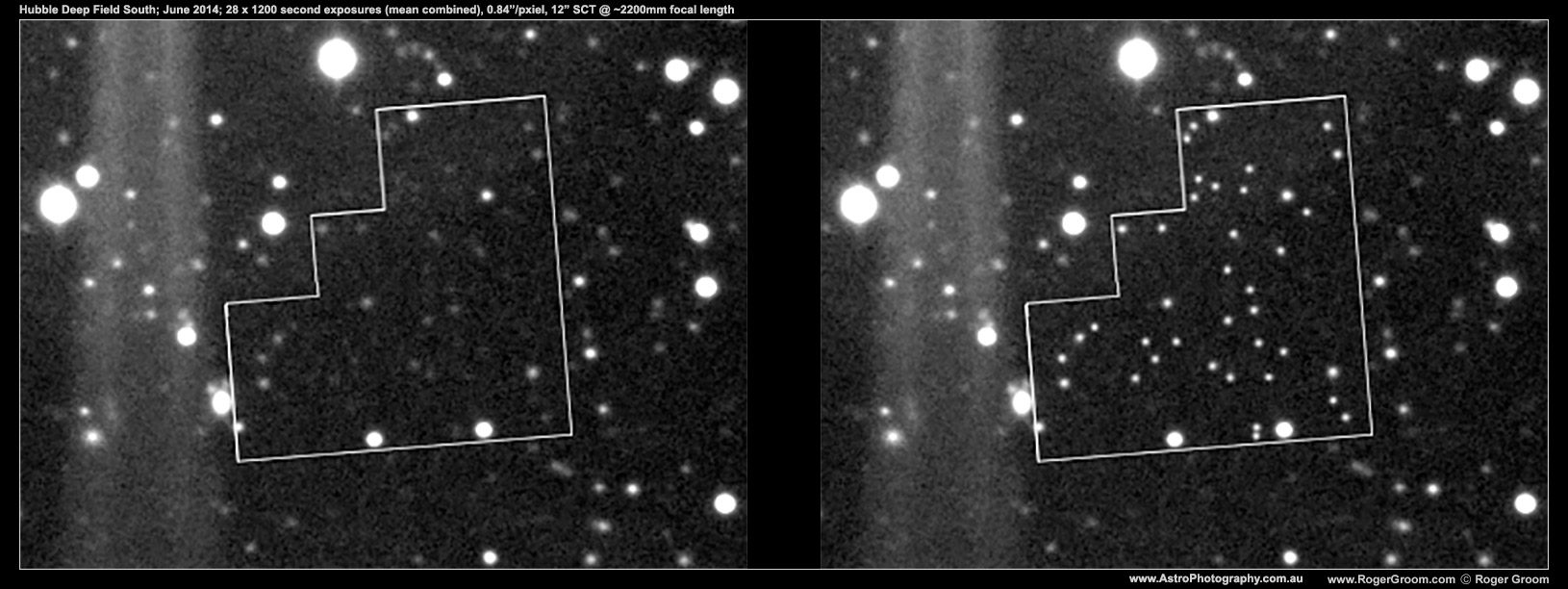
From 1996 The Hubble Deep Field South:

-
These are about as good as I ever did.
The core of M31 The Andromeda Galaxy The large print shows a few background galaxies in addition to the one circular galaxy M32 at about ten o'clock and M110 not shown in the core but is in the 9 panel mosaic of the entire galaxy.
Capturing the faint wispy gas and dust in NGC 6995 The Veil Nebula was challenging. I believe this to be my most star dense photograph. I was also able to do it with a modified Canon D50 DSLR. One shot color is so convenient but the resolution is not a good as doing individual Red, Green and Blue exposures.
Our photographs do not have the diffraction spike defect that Hubble and JSWT experience as we used telescopes without secondary spider vanes. Our goal was perfectly round stars edge to edge. Most of our photographs were done with telescopes that have objective lenses or primary mirrors, 10" in diameter or less. NGC 6995 was taken with a 5.1" diameter telescope.
We of course have to shoot through the atmosphere which causes loss of resolution, and even blurred frames which we have to cull from the process. Space telescopes do not have to shoot through the atmosphere. Every exposure they take is perfect. Bastards! lol
-
@Copper said in James Webb Space Telescope Launch Update:
Mr. Biden gave us a sneak peak today
That's a lot of galaxies.
A whole lot.
@George-K said in James Webb Space Telescope Launch Update:
@Copper said in James Webb Space Telescope Launch Update:
Mr. Biden gave us a sneak peak today
That's a lot of galaxies.
A whole lot.
I counted 413.
-
@89th said in James Webb Space Telescope Launch Update:
Mark. This thread has reminded me of how effing good your astrophotography skills are.
Thank you 89th! I plan on doing more. I have a new mount but it is an economy model and not the super precise and expensive Astro-Physics mounts that I had previously. I hope to have an AP mount again someday soon. I still have my 130mm Astro-Physics Refractor.
I hope they turn JWST on M16 The Eagle Nebula (Hubble's "Pillars of Creation")
M16 is also one of my favorites we did. The object was so low in the southern sky that we had a limited window of about 2 hours to capture images, each night. This was a collaborative effort with Trent and Roland.
-
@89th said in James Webb Space Telescope Launch Update:
Mark. This thread has reminded me of how effing good your astrophotography skills are.
Thank you 89th! I plan on doing more. I have a new mount but it is an economy model and not the super precise and expensive Astro-Physics mounts that I had previously. I hope to have an AP mount again someday soon. I still have my 130mm Astro-Physics Refractor.
I hope they turn JWST on M16 The Eagle Nebula (Hubble's "Pillars of Creation")
M16 is also one of my favorites we did. The object was so low in the southern sky that we had a limited window of about 2 hours to capture images, each night. This was a collaborative effort with Trent and Roland.
@mark Wow I could look at that image for hours. That is awesome. As best you can, how long do you have to expose to get that image (and/or how many other pictures do you need to composite, since you said it was a team effort)?
For pillars... I saw this yesterday and thought at first the image on the right WAS from Webb, but it was not. I don't think. Some argue the "visible only" image on the left is cooler.
-
@89th said in James Webb Space Telescope Launch Update:
Mark. This thread has reminded me of how effing good your astrophotography skills are.
Thank you 89th! I plan on doing more. I have a new mount but it is an economy model and not the super precise and expensive Astro-Physics mounts that I had previously. I hope to have an AP mount again someday soon. I still have my 130mm Astro-Physics Refractor.
I hope they turn JWST on M16 The Eagle Nebula (Hubble's "Pillars of Creation")
M16 is also one of my favorites we did. The object was so low in the southern sky that we had a limited window of about 2 hours to capture images, each night. This was a collaborative effort with Trent and Roland.
@mark those are amazing!
-
@mark Wow I could look at that image for hours. That is awesome. As best you can, how long do you have to expose to get that image (and/or how many other pictures do you need to composite, since you said it was a team effort)?
For pillars... I saw this yesterday and thought at first the image on the right WAS from Webb, but it was not. I don't think. Some argue the "visible only" image on the left is cooler.
@89th Best guess on this one as I don't have the raw .fits files handy and it might take me resuscitating an old Mac Quad G5 Tower to locate them. lol
I will base my estimates on the location and filters used, which we do have listed on the website. Apparently I failed to update the exposure data. This was taken from Trent's backyard observatory and Roland's observatory at Astro-Physics.
So, anywhere from 5-10 minutes for the R, G, and B exposures to 30, or even possibly 60 minutes for the H-Alpha narrow bandwidth filter.
I estimate we have 25 to 50 exposures per filter, per telescope. Which equates to 225 - 450 individual Red, Green and Blue exposures. An additional 30 or more H-Alpha frames from my telescope. Easily 30 hours of H-Alpha as it was our minimum. I probably did more like 50 hours.
Although I also provided RGB frames, my job was to capture the narrowband H-Alpha lines. The H-Alpha filter is calibrated to only pass a wavelength of 656.3 nanometers with a tolerance of 5nm on each side of 656.3. The Ha filter only permits light that is passing through hydrogen. We assigned it to the Red channel.
This chart shows the commonly used narrowband filters:

https://customscientific.com/astronomy.html
So you start by reviewing every single exposure for any issues like tracking or guiding errors, airplanes and satellites passing through, focus drift, atmospheric turbulence , etc. If you find any issues, you reject the exposure.
Each color channel's exposures are then combined in software that produces a median pixel value over the number of exposures for every pixel in the photo.
Once you cull and combine the exposures, each one is placed in the corresponding color channel in photoshop. The Ha exposures are done separately and then combined into the red channel along with the Ref exposures. The Ha provides much finer details in the hydrogen gas clouds.
Then you go through a series of color balance, levels, curves, and possibly add an un-sharp mask to coax more detail. Everything is done in small increments. It could take days or even weeks to process these images. Our M31 took over a month just to process all the data.
-
@mark those are amazing!
@Doctor-Phibes said in James Webb Space Telescope Launch Update:
@mark those are amazing!
Thanks Phibes! I intend to keep doing it well into old age. I hope to get some new photos this year.
-
@89th Best guess on this one as I don't have the raw .fits files handy and it might take me resuscitating an old Mac Quad G5 Tower to locate them. lol
I will base my estimates on the location and filters used, which we do have listed on the website. Apparently I failed to update the exposure data. This was taken from Trent's backyard observatory and Roland's observatory at Astro-Physics.
So, anywhere from 5-10 minutes for the R, G, and B exposures to 30, or even possibly 60 minutes for the H-Alpha narrow bandwidth filter.
I estimate we have 25 to 50 exposures per filter, per telescope. Which equates to 225 - 450 individual Red, Green and Blue exposures. An additional 30 or more H-Alpha frames from my telescope. Easily 30 hours of H-Alpha as it was our minimum. I probably did more like 50 hours.
Although I also provided RGB frames, my job was to capture the narrowband H-Alpha lines. The H-Alpha filter is calibrated to only pass a wavelength of 656.3 nanometers with a tolerance of 5nm on each side of 656.3. The Ha filter only permits light that is passing through hydrogen. We assigned it to the Red channel.
This chart shows the commonly used narrowband filters:

https://customscientific.com/astronomy.html
So you start by reviewing every single exposure for any issues like tracking or guiding errors, airplanes and satellites passing through, focus drift, atmospheric turbulence , etc. If you find any issues, you reject the exposure.
Each color channel's exposures are then combined in software that produces a median pixel value over the number of exposures for every pixel in the photo.
Once you cull and combine the exposures, each one is placed in the corresponding color channel in photoshop. The Ha exposures are done separately and then combined into the red channel along with the Ref exposures. The Ha provides much finer details in the hydrogen gas clouds.
Then you go through a series of color balance, levels, curves, and possibly add an un-sharp mask to coax more detail. Everything is done in small increments. It could take days or even weeks to process these images. Our M31 took over a month just to process all the data.
-
One of the best Amateur Stephan's Quintet I have seen.
Robert Gendler was active in the hobby at the same time that were active. His portfolio is immense and extremely well done.He used a 20" diameter telescope for this one.
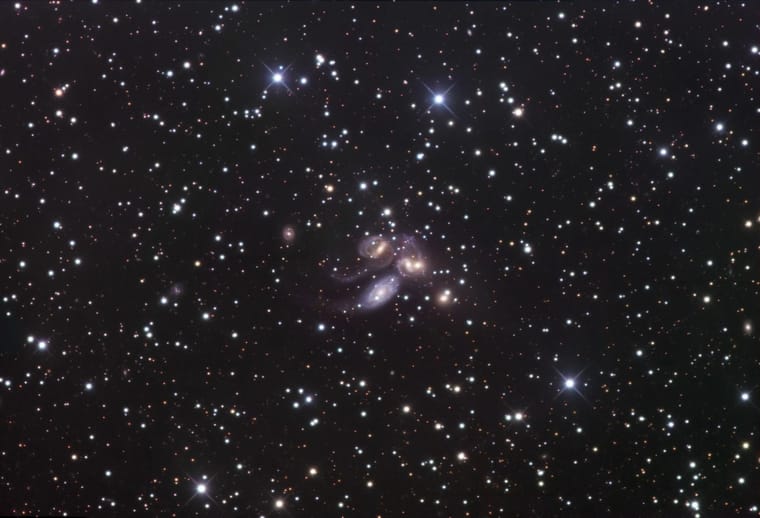
click on the image to see a full size version.
-
One of the best Amateur Stephan's Quintet I have seen.
Robert Gendler was active in the hobby at the same time that were active. His portfolio is immense and extremely well done.He used a 20" diameter telescope for this one.

click on the image to see a full size version.
-
I have no idea regarding the accuracy of the attribution of this quotation, but the sentiment seems about right.
"To consider the Earth as the only populated world in the infinity of space is as absurd as to assert that in an entire field of seeds only one plant will grow."
Metrodorus of Chios, a student of Democritus, 4th century BCE.
